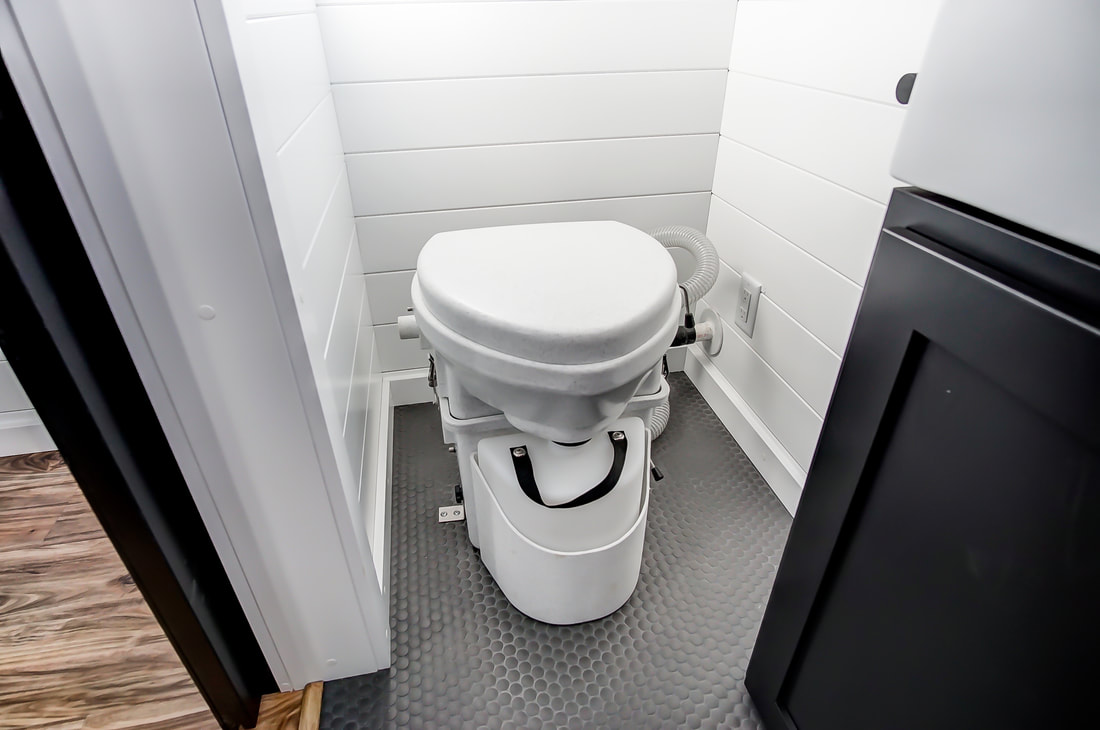|
Composting Toilets 101
Composting toilets are a type of toilet that use bacteria to break down and decompose human waste into compost. They are often used in tiny homes, as they are a more environmentally-friendly and water-efficient alternative to traditional flush toilets. There are several pros to using a composting toilet in a tiny home: Saves water: Traditional flush toilets can use several precious gallons of water per flush, while composting toilets use significantly less water, or no water at all. Reduces the amount of sewage: Composting toilets reduce the amount of sewage that needs to be treated, as the compost produced by the toilet can be safely and easily disposed of on site (and even used in a garden.) Environmentally-friendly: Composting toilets reduce the amount of water pollution caused by sewage, as well as the greenhouse gases produced by the treatment of sewage. Can be used off the grid: Composting toilets can be used in areas without access to a septic system or municipal sewage treatment, making them ideal for tiny homes that are off the grid. There are also a few cons to using a composting toilet in a tiny home: Cost: Composting toilets are often more expensive to purchase and install than traditional flush toilets. Maintenance: Composting toilets require regular maintenance, such as adding composting material and turning the compost, to ensure proper decomposition. Odor: If not properly maintained, composting toilets can produce unpleasant odors. Limited capacity: Composting toilets have a limited capacity and may need to be emptied more frequently than traditional flush toilets. Overall, the pros of using a composting toilet in a tiny home, such as water and environmental savings, may outweigh the cons for some people. However, it is important to carefully consider the costs and maintenance requirements before making a decision. Our preferred brand (no ad): Nature's Head |
Archives
June 2024
|
Modern Tiny Living, LLC. • Columbus, Ohio • © Copyright 2024 Modern Tiny Living • All Rights Reserved

 RSS Feed
RSS Feed
